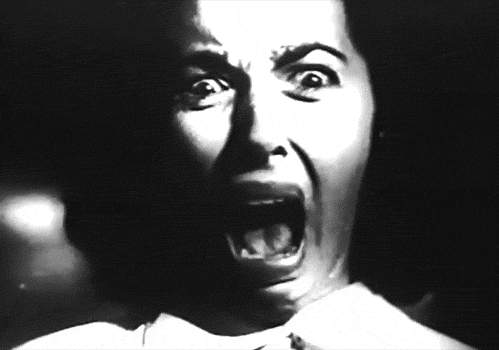At the beginning of our opening sequence we used a MONTAGE of dark, stereotypical horror locations and settings to lure the audience into our film.
We have used OVER-THE-SHOULDER/ SHOT REVERSE SHOT to represent a conversation between characters. we tried to make sure that the main characters were centre framed most of the time.
These MID-SHOTS were used so that the audience could be introduced to our characters.
the shot below was origionally a LONG-SHOT but due to camera difficulties we had to change it.
We have have tried to use a lot of CLOSE-UPS AND EXTREME-CLOSE-UPS in our opening sequence because this way you can see the emotion on the characters face. we have mostly used them on our main character Adalyn, this way the audience will immediately fixate on her.
Here we have used a HIGH-ANGLE SHOT looking slightly down on Adalyn from the demons point of view. This type of shot is used commonly to show that the character in the shot is weaker and has no power in that situation; here it shows that Adalyn is weaker than the power of the demon.
We have used many REACTION-SHOTS which are incredibly important in horror films.
they are used to tell the audience what to think, if the main character is scared/frightened they will be too. the top reaction is Doctor Bensons reaction to Adalyn staring just behind him.
the reaction below that is what Adalyn's reaction is to what is behind Doctor Benson.
This is as close as we got to creating a LONG-SHOT and at the same time an OVER-THE-SHOULDER SHOT.
This shot we have tried to re-create from the horror film 'Insidious'. the demon being so close and un-noticed builds tension and suspense for the audience because they don't know what will happen next. the demon in our film is there to torment Adalyn.























